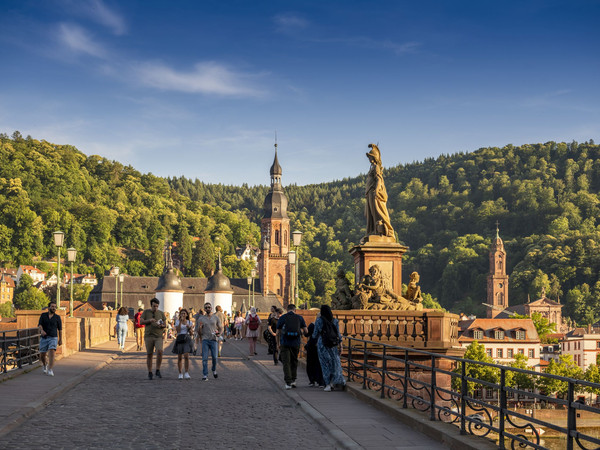It is made of Neckar Valley sandstone and was built by Elector Karl Theodor in the 18th century.
On March 29, 1945, one of the last days of World War II, German soldiers blew up Heidelberg's Neckar bridges, including the Old Bridge. Thanks to a lively fundraising campaign led by the citizens, reconstruction could begin on March 14, 1946. The inauguration took place in July 1947.
There are two sculptures on the bridge: Elector Karl Theodor and the Roman goddess Minerva (Greek: Pallas Athena).
The monument to the Elector stands closer to the southern bank of the Neckar. The figures depicted on the two-tiered pedestal around the monument symbolize the most important rivers in the territories ruled by Karl Theodor: the Rhine and Moselle, Danube and Isar.
The promotion of art and science was very close to the elector's heart. That is why the second monument is dedicated to the goddess of Wisdom.
On the north bank, the bridge's patron saint,John Nepomuk, is depicted.

